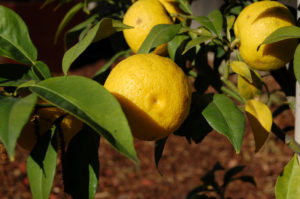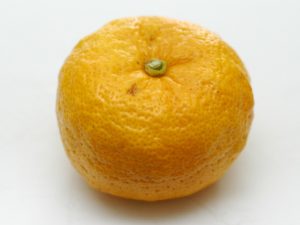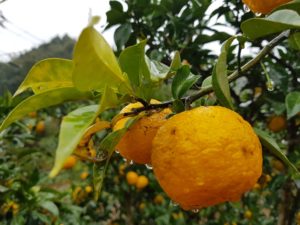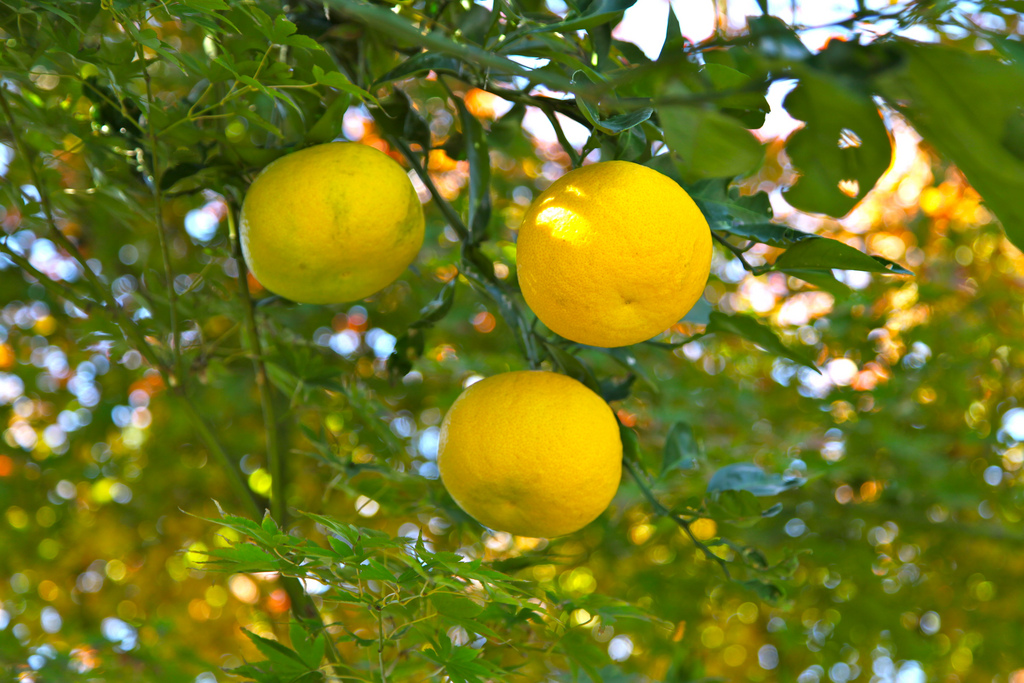Yuzu, or citrus junos, is a citrus fruit and plant in the family Rutaceae. It’s called “yuja” in Korean cuisine. Both Japanese “yuzu” and Korean “yuja” are cognates of Chinese “youzi”, but the Chinese word means pomelo. Take a look below for 22 more interesting and fascinating facts about yuzu.
1. Yuzu looks somewhat like a small grapefruit with an uneven skin, and can be either yellow or green depending on the degree of ripeness.
2. Yuzu typically range between 5.5 and 7.5 centimeters in diameter, but can be as large as a regular grapefruit, which is about 10 centimeters or larger.
3. The fruit forms an upright shrub or small tree, which commonly has many big thorns.
4. The leaves of the yuzu tree are notable for a large petiole, resembling those of the relate kaffir lime and ichang papeda, and are heavily scented.

5. Yuzu closely resembles sudachi, which is a Japanese citrus from Tokushima Prefecture, in many regards. For example, they share a similar mandarin-ichang papeda ancestry, through yuzu eventually ripen to an orange color, and there are subtle differences between the flavors of the fruit.
6. The yuzu originated and grows wild in central China and Tibet.
7. The fruit was introduced to Japan and Korea during the Tang Dynasty and it’s in these nations that it’s cultivated most widely.
8. In Japan, an ornamental version of yuzu called hana yuzu, or flower yuzu, is grown for its flowers rather than its fruit.
9. A sweet variety of yuzu known as the yuku is only available in Japan. Yuku became severely endangered during the 1970s and 1980s, but a major attempt was made to revive the varietal in southern Japan.

10. A different variety of yuzu in Japan, with knobby skin, is called shishi yuzu, or lion yuzu.
11. Yuzu is rarely eaten as a fruit, though in Japanese cuisine its aromatic zest is used to garnish some dishes and its juice is used as a seasoning.
12. Yuzu is an integral ingredient in the citrus-based sauce ponzu.
13. Yuzu is often combined with honey to make “yuzu hachimitsu”, a kind of syrup that is used to make yuzu tea or as an ingredient in alcoholic drinks such as the yuzu sour.
14. In Korean cuisine, yuzu is most commonly used to make yuja-cheong and yuja tea.
15. Beginning in the early 21st century, yuzu has been increasingly used by chefs in the United States and other Western nations.

16. Yuzu is known for its characteristically strong aroma, and the oil from its skin is often marketed as a fragrance.
17. In Japan, bathing with yuzu on Toji, the winter solstice, is a custom that dates to at least the early 18th century. Whole yuzu fruits are floated in the hot water of the bath, sometimes enclosed in a cloth bag, releasing their aroma.
18. The yuzu bath, which is more commonly known as “yuzuyu”, is said to guard against colds, treat the roughness of skin, warm the body and relax the mind.
19. The body of the taepyeongso, a Korean traditional oboe, close to the Chinese Suona or the Zurna, is often made from yuzu wood.
20. Yuzu is believed to be a cross between a mandarin and a papeda fruit, a sub genus of the genus citrus which includes the kaffir lime, if not, in its turn, a cross between the lime and the citron.

21. Kosho is a paste made from yuzu peel, chili pepper and salt. It has a bitter, salty and hot spicy flavor.
22. Yamabushi are the ascetic hermits endowed with supernatural powers in traditional Japanese mysticism. Legend has it that the famous yuzukosho seasoning was created by them, starting from a yuzu tree on the sacred Mount Hiko.




